 Your new post is loading...
 Your new post is loading...
Congress is looking for answers as to how two nurses got infected, and why officials at Texas Health Presbyterian Dallas hospital sent home Thomas Eric Duncan—who would later die of Ebola—when he first came to the hospital with symptoms and said he was from Liberia.
In written testimony to the U.S. House Energy and Commerce Committee’s Subcommittee on Oversight and Investigations, Dr. Daniel Varga, the hospital’s chief clinical officer, said, quite simply, “We made mistakes.”
“We did not correctly diagnose his symptoms as those of Ebola,” Varga wrote. “We are deeply sorry.”
He goes on to say that officials don’t really know how Nina Pham, the first of two nurses at the hospital diagnosed with Ebola, could have contracted the disease. Varga wrote...
Filed under: The most WTF thing we've seen in months.
Urban Outfitters, purveyor of clothing and home goods, big-ass floppy hats and occasionally offensive T-shirts, has outdone itself with this product on its website—a "vintage" Kent State University sweatshirt featuring fake blood splatters.
In 1970, the Ohio National Guard fired on a group of unarmed anti-war student protesters at Kent State, killing four and wounding nine others. The sweatshirt sold out quickly, because there was only one. ("We only have one, so get it or regret it!" said the description.) Now it's listed on eBay by someone who says he/she will "give 50% of the profit to the Southern Poverty Law Center, who protect those who cannot protect themselves, often those who are victims of police brutality."...
BURLINGTON, Vt. — The Winooski restaurant that was overwhelmed with online comments after it took down a bacon advertisement is moving forward, with the help of a public relations firm.
Sneakers Bistro and Cafe took down a sign that said "Yield For Sneakers Bacon" that had been in the Winooski Rotary last week in response to a complaint from a "vegan and a member of a Muslim household" who said the sign was insensitive to the city's diverse population.
Many people balked at the decision, criticizing Sneakers for what they said was an unnecessary move....
Like so many of you, I have been stunned by the images of a militarized police force in Ferguson, MO harassing, tear gassing, arresting and even beating citizens who are protesting the police shoot...
...Let me be clear – these police actions are absolutely wrong from a human perspective too. And, from what I have seen, they have trampled on the people’s right to assemble, freedom of the press, free speech, destruction of personal property, unlawful arrests and likely dozens of other rights I’m not even familiar with.
But, strictly from a PR perspective, they are cutting of their own noses to spite there faces....
An Ecuadoran environmental group apparently started and promoted the hashtag #AskChevron, but Twitter users seem to believe the oil company created it.
The promoted trending topic on Twitter on Wednesday morning was #AskChevron, a hashtag similar to #AskJPM and #myNYPD, which resulted in social media disasters for J.P. Morgan and the New York Police Department, respectively.
Here’s the twist, though: Chevron seemingly has nothing to do with #AskChevron.
The company hasn’t tweeted the hashtag. Its Wednesday morning tweets, which were about its annual stockholders meeting, used the hashtags #Chevron and #stockholders, not #AskChevron.
The account that has tweeted #AskChevron the most is @thetoxiceffect, an environmental group based in Ecuador. The group has a promoted tweet with an image listing transgressions that “Chevron is guilty of”:...
The maker of ‘Watch Dogs’ sent an Australian news publication a safe with a copy of the game inside. When staffers got suspicious, they called the cops.
We’ve known for some time that Snapchat‘s privacy claims don’t quite add up, and today the network and the Federal Trade Commission have reached an agreement on that point.
What does this mean? Basically, Evan Spiegel and company will officially admit that snaps don’t really “disappear forever” (they never did) and that recipients may, in fact, preserve the images/clips indefinitely in several ways without letting the sender know....
A congressman was caught on surveillance tape kissing a woman (not his wife). His crisis management takes a page out of David Letterman's and Don Draper's playbook.
...Well, so much for that. According to Politico, Rep. McAllister’s staff said the congressman would no longer pursue an investigation into the leaker. It looks like he will have little to hide behind other than the de rigueur “I have let my family down and will try to do better” line.
2013 was a great year for social media but a somewhat forgettable one for online security, with a series of high-profile software glitches and exploits causing a lot of damage, both in reputations and finances, throughout the year.
Consider Twitter, for example. A hacked Associated Press (@AP) tweet that reported an explosion in the White House and an injured President Obama triggered an immediate collapse in the stock market costing hundreds of millions of dollars.
Sure, the exploit was quickly rectified and calm resorted, but the event shined a light on the sheer power of Twitter to move markets on news, even if it was falsified. Target, Amazon, NASDAQ and others also had major technical snafus in 2013, and this visual from Cast Software takes a closer look at last year’s biggest software disasters....
It seems like every Crisis 101 playbook now includes taking out full page ads in a cross section of national and metro dailies to publish an open letter from the CEO.
The tactic gives the company under siege the opportunity to control the narrative.
It can be effective as long as the company surrounds the open letter with other forms of communications, which was the case with Target and its CEO conducting aninterview on CNBC.
Still, we’ve seen how the open letter can add to the mess, as highlighted in “Letter to Toyota Customers Hits Pothole.”
With this in mind, let’s reverse-engineer Target’s try...
When the CEO of a company responsible for contaminating drinking water tried to walk away from a press conference, one reporter refused to let him leave.
One of the smartest things a brand can do is to respond as quickly and intelligently as possible to negative social media publicity, which is exactly what Taco Bell did.
Whether it’s an unsatisfactory customer experience, a management mistake, product malfunction or an employee of a major fast food chain publicly posting photos of themselves licking Tacos there are many reasons a company can get bad publicity.Below, we share with you some simple PR techniques that may well be worth thinking about so that your company is ready when people start talking about you on a blog, Facebook or Twitter....
The key word in social media is social.
As such, it’s a two-way game. Brands and businesses that use channels such as Twitter and Facebook to simply broadcast their message rarely get the sort of results they would expect. Fans and customers want and demand to be heard, and brands that carefully nurture these relationships benefit from higher engagement levels, boosts in website traffic and sales, strong word of mouth marketing and customer loyalty.
But sometimes, despite our best efforts, things go wrong. So what do you do when the worst happens?...
|
The proportion of corporate directors who say their companies are monitoring social media for “adverse publicity” (a gentle euphemism) has increased from 32% in 2012 to 41% today, according to the latest Corporate Directors Survey from PricewaterhouseCoopers.
However, as these figures indicate more than half of corporate directors still believe their companies aren’t doing a good enough job of keeping an eye out for adverse publicity: 55% of the PwC survey respondents said their companies either aren’t monitoring social media efficiently, or aren’t doing it at all. That’s down moderately from 61% in 2012.
PwC found a similar story in regards to social media strategies for applications like marketing, research, and internal communications. Thus 40% of respondents said their companies are leveraging social media for strategic goals, while 54% said their companies’ efforts to leverage social media are insufficient or nonexistent; both figures are unchanged from two years ago....
Last week, an audio technician for the television program Cops was killed by friendly fire while filming a robbery at a Wendy’s in Omaha, Nebraska.
The Omaha police chief, Todd Schmaderer, delivered an almost perfect press conference—one that stands in marked contrast to the shameful media interactions in Ferguson, Missouri—that should be studied by PR professionals as a terrific example of how to communicate in crisis.
PR pro Dave Statter, who writes the excellent STATter911 blog (and wrote about this story first), called this “one of the most effective and timely presentations following a police involved shooting I’ve witnessed.”
He’s right. Chief Schmaderer did many things right in this press conference. Below, you’ll find the five things that stood out to me most....
A GIANT public relations agency that has been under fire for a couple of gaffes in the last couple of weeks says it is taking steps to try to make sure such blunders do not recur — the kinds of steps it would recommend to clients in the same predicaments.
“What the leadership team decided,” Ben Boyd, president for practices, sectors and offerings at Edelman in New York, said in an interview on Friday, is that “we will treat ourselves like we treat a client.”
“Lesson learned,” he added.
“Just because you advise clients on the complexities of today’s world, that doesn’t mean they’re easier to manage,” Mr. Boyd said, adding that “it would have been smart” to have had in place at Edelman some of the internal protocols and processes that the agency’s 5,000 employees suggest that clients adopt....
A study by Brandfog found that 75 percent of Americans surveyed agree that CEO participation in social media leads to better leadership.
That’s up a remarkable 30 percent over the results in 2012. The survey also found that 77 percent of Americans said that C-suite executives who engage on social media create more transparency for the brand, and 80 percent agreed that social media has become an essential aspect of PR and communications strategy for C-Suite executives.
That is key, particularly when crisis strikes. It gives the CEO and the brand both the credibility and channel to manage a crisis response....
This was the worst media apology I’ve ever seen.
LA Clippers owner Donald Sterling—who was caught on tape telling his girlfriend not to be photographed or attend basketball games with black people—attempted to apologize during an interview with CNN’s Anderson Cooper.
Sterling did apologize. But he also took the opportunity to attack Magic Johnson for getting “those AIDS” and made new racist remarks by claiming that wealthy African Americans “don’t want” to help their own communities like Jews do...
After hundreds of workers were killed in Turkey's worst-ever mining accident, Turkey's prime minister sought to downplay the disaster.
...Prime Minister Recep Tayyip Erdogan did a few things right in his response. He visited the site, comforted victims, and, according to The Telegraph, he “promised the tragedy would be investigated to its ‘smallest detail’ and that ‘no negligence will be ignored.’”
But then he violated a basic rule of crisis communications that must be adhered to when fatalities are involved....
New NBA Commissioner Adam Silver was handed a high-profile test that would determine whether or not he would establish himself as a leader. Did he pass?
...That may have seemed like an obvious decision to make, but it was more complicated than it appeared. For example, Dallas Mavericks Owner Mark Cuban seemed to oppose a lifetime ban due to the “slippery slope” such a precedent would set. Other critics also wondered if the comments—which were made in private to a romantic partner—should have led to his removal as a team owner.
I understand those concerns, but I’ve been thoroughly impressed with the NBA’s handling of this incident. The League’s crisis management worked, and the NBA did almost everything right in terms of communicating with the press. The press conference itself was also handled well: A press handler, presumably an NBA staffer, selected the questioners and counted down when they would take only two more questions. Press conferences rarely run as smoothly....
Chances are, sooner or later you will find yourself caught in a social media wildfire, or at least see smoke in the distance. Are you prepared to fight the fire? I asked seven of the leading social media crisis experts, “what is the most important weapon you need to fight a social media crisis?” With their answers, you can build a full arsenal to manage any negative event you face....
The 5C’s of crisis communications detail the five critical traits all executives and spokespersons must convey during their press conferences and interviews.
Mining the mobile phone data from 10 million people over 4 years reveals the subtle changes that occur in the flow of information when disaster strikes, say network scientistsscientists.
...More interesting, however, is what happens next. It’s easy to imagine that the first thing the group of friends and relatives do next is contact other people to spread the news that a disaster has struck.
But instead, the next call they make tends to be straight back to the person involved in the emergency situation. This is completely different to the normal behaviour where the likelihood of returning a call is significantly lower. Indeed, a call made during a concert is less likely than usual to get a call back.
Liang and co conclude that the need for correspondence with eyewitnesses is more critical than the dissemination of situational awareness during emergencies.” In other words, the desire to want to find out more trumps the need to pass on what they already know. At least in emergency situations....
I’ve written before about the dangers of uttering “quotes of denial,” in which the word “not” is placed immediately before a negative noun or adjective. The problem is that the defensive-sounding negative word or phrase tends to linger longer in the public memory than the word “not.”
So when Chris Christie uttered the phrase “I am not a bully” during his marathon press conference on Thursday, I knew it would be used against him. Sure enough, here’s the cover from this weekend’s USA Today Weekend...
“Many studies have already shown how important crisis management is for organizations,” Hong said. “This study shows that Facebook can be a valuable tool for public relations professionals when working to solve or lessen the severity of a crisis. Because Facebook is very personal for its users, well-thought-out crisis management messages can be effective at reaching users on a personal level, which is a powerful way to persuade people to a cause.”
Hong also found that Facebook posts written in a narrative style were more effective than posts written in a non-narrative format. Narrative style is chronological and focuses more on story-telling rather than fact listing.
“This indicates that the effect of narrative tone in organizational statements during crises increases perceived conversational human voice, which represents a high level of engagement and best communicates trust, satisfaction, and commitment to the audience,” Hong said. “This is an important practice for public relations professionals because perceptions that an organization is sincerely trying to provide timely and accurate information during a crisis can lead to not only more favorable attitudes toward the organization, but also perceptions of less responsibility the organization has for causing the crisis.”...
|



 Your new post is loading...
Your new post is loading...



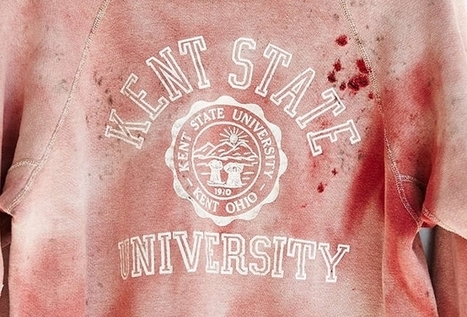



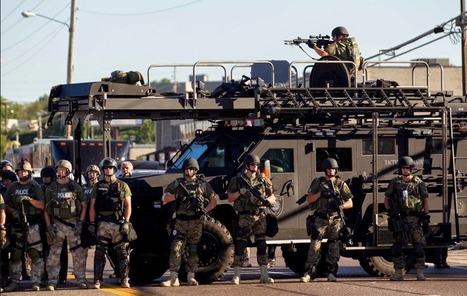


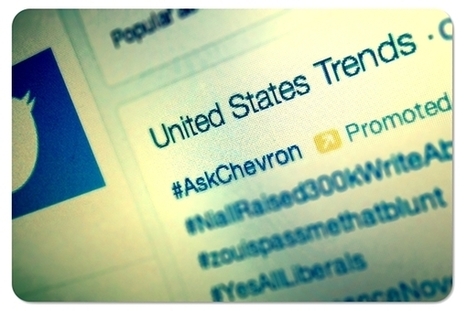


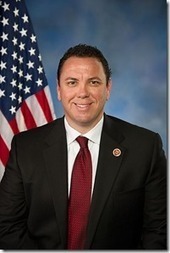
![Twitter, Amazon, NASDAQ, Target – 2013′s Biggest Digital Disasters [INFOGRAPHIC] - AllTwitter | Public Relations & Social Marketing Insight | Scoop.it](https://img.scoop.it/m-Tio9IQrMS7Ee9nI8vchTl72eJkfbmt4t8yenImKBVvK0kTmF0xjctABnaLJIm9)














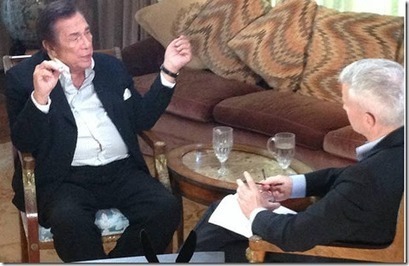
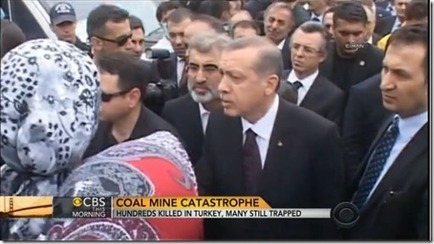
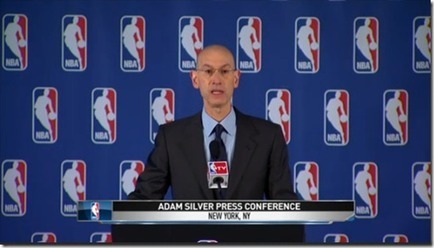


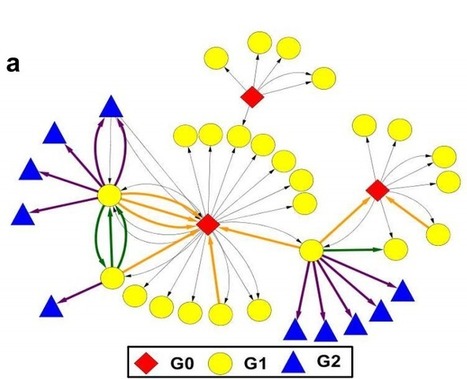

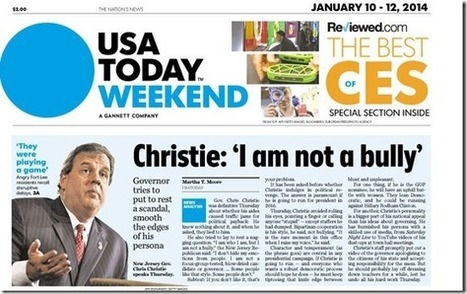






Huge crisis management challenge starts with an apology. In written testimony to the U.S. House Energy and Commerce Committee, Dr. Daniel Varga of Texas Health Presbyterian Dallas says, ‘We are deeply sorry.’